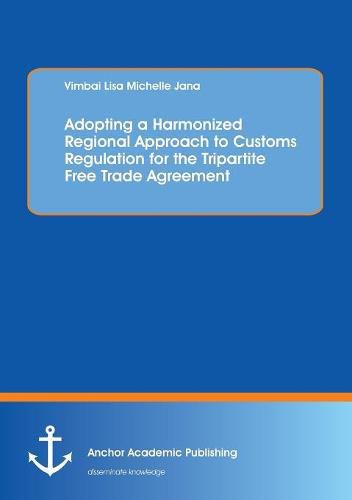Readings Newsletter
Become a Readings Member to make your shopping experience even easier.
Sign in or sign up for free!
You’re not far away from qualifying for FREE standard shipping within Australia
You’ve qualified for FREE standard shipping within Australia
The cart is loading…






This title is printed to order. This book may have been self-published. If so, we cannot guarantee the quality of the content. In the main most books will have gone through the editing process however some may not. We therefore suggest that you be aware of this before ordering this book. If in doubt check either the author or publisher’s details as we are unable to accept any returns unless they are faulty. Please contact us if you have any questions.
The three regional economic communities (RECs) in Eastern and Southern Africa are the Common Market for Eastern and Southern Africa (COMESA), the East African Community (EAC) and the Southern African Development Community (SADC). Together, they have recognised the need to work towards regional cooperation aimed at the eventual creation of a single regional economic community or Tripartite Free Trade Agreement (TFTA). This will replace the existent RECs in Eastern and Southern Africa to which the member states of these two regions have multiple membership. The TFTA region comprises a total of 27 member states which have a combined population of 527 million people and a combined gross domestic product (GDP) of USD 624 billion. These statistics translate into a potential regional economic powerhouse for Eastern and Southern Africa. One of the major goals of the TFTA is to harmonise trade arrangements among the three RECs, improve the movement of goods and persons within the single integrated region, facilitate the joint implementation of regional infrastructure projects and enhance co-operation of member states. This is a laudable initiative by the member states of the three RECs and it is recognised that regional integration is the first step towards integration into a multilateral trading system. For the TFTA member states, it is crucial that there is an awareness to move towards a review of domestic customs legislation and policy and to develop regional, supranational legislation and regulations in order to gain a stronger competitive edge in the global market. This study shies away from proposing a quick fix or instant benefit to the harmonisation of TFTA member states customs legislative frameworks and policies and the development of a single automated, interoperable electronic customs system. Rather, it places its focus on long-term sustainable benefits which will be realised over time. The harmonisation of TFTA member state customs legislative policies and t
$9.00 standard shipping within Australia
FREE standard shipping within Australia for orders over $100.00
Express & International shipping calculated at checkout
This title is printed to order. This book may have been self-published. If so, we cannot guarantee the quality of the content. In the main most books will have gone through the editing process however some may not. We therefore suggest that you be aware of this before ordering this book. If in doubt check either the author or publisher’s details as we are unable to accept any returns unless they are faulty. Please contact us if you have any questions.
The three regional economic communities (RECs) in Eastern and Southern Africa are the Common Market for Eastern and Southern Africa (COMESA), the East African Community (EAC) and the Southern African Development Community (SADC). Together, they have recognised the need to work towards regional cooperation aimed at the eventual creation of a single regional economic community or Tripartite Free Trade Agreement (TFTA). This will replace the existent RECs in Eastern and Southern Africa to which the member states of these two regions have multiple membership. The TFTA region comprises a total of 27 member states which have a combined population of 527 million people and a combined gross domestic product (GDP) of USD 624 billion. These statistics translate into a potential regional economic powerhouse for Eastern and Southern Africa. One of the major goals of the TFTA is to harmonise trade arrangements among the three RECs, improve the movement of goods and persons within the single integrated region, facilitate the joint implementation of regional infrastructure projects and enhance co-operation of member states. This is a laudable initiative by the member states of the three RECs and it is recognised that regional integration is the first step towards integration into a multilateral trading system. For the TFTA member states, it is crucial that there is an awareness to move towards a review of domestic customs legislation and policy and to develop regional, supranational legislation and regulations in order to gain a stronger competitive edge in the global market. This study shies away from proposing a quick fix or instant benefit to the harmonisation of TFTA member states customs legislative frameworks and policies and the development of a single automated, interoperable electronic customs system. Rather, it places its focus on long-term sustainable benefits which will be realised over time. The harmonisation of TFTA member state customs legislative policies and t